Cover
Cloud Computing
Computer Communications and Networks series
ISBN 1849962405
Foreword
Preface
Introduction
Expected Audience
Book Overview
Part 1: Cloud Base
Part 2: Cloud Seeding
Part 3: Cloud Breaks
Part 4: Cloud Feedback
Contents
Part I
Cloud Base
Chapter 1: Tools and Technologies for Building Clouds
1.1 Introduction
1.1.1 Cloud Services and Enabling Technologies
1.2 Virtualization Technology
1.2.1 Virtual Machines
1.2.2 Virtualization Platforms
1.2.3 Virtual Infrastructure Management
1.2.4 Cloud Infrastructure Manager
1.3 The MapReduce System
1.3.1 Hadoop MapReduce Overview
1.4 Web Services
1.4.1 RPC (Remote Procedure Call)
1.4.2 SOA (Service-Oriented Architecture)
1.4.3 REST (Representative State Transfer)
1.4.4 Mashup
1.4.5 Web Services in Practice
1.5 Conclusions
References
Chapter 2: A Taxonomy, Survey, and Issues of Cloud Computing Ecosystems
2.1 Introduction
2.2 Background and Related Work
2.3 Taxonomy of Cloud Computing
2.3.1 Cloud Architecture
2.3.1.1 Services and Modes of Cloud Computing
Software-as-a-Service (SaaS)
Platform-as-a-Service (PaaS)
Hardware-as-a-Service (HaaS)
Infrastructure-as-a-Service (IaaS)
2.3.2 Virtualization Management
2.3.3 Core Services
2.3.3.1 Discovery and Replication
2.3.3.2 Load Balancing
2.3.3.3 Resource Management
2.3.4 Data Governance
2.3.4.1 Interoperability
2.3.4.2 Data Migration
2.3.5 Management Services
2.3.5.1 Deployment and Configuration
2.3.5.2 Monitoring and Reporting
2.3.5.3 Service-Level Agreements (SLAs) Management
2.3.5.4 Metering and Billing
2.3.5.5 Provisioning
2.3.6 Security
2.3.6.1 Encryption/Decryption
2.3.6.2 Privacy and Federated Identity
2.3.6.3 Authorization and Authentication
2.3.7 Fault Tolerance
2.4 Classification and Comparison between Cloud Computing Ecosystems
2.5 Findings
2.5.1 Cloud Computing Infrastructure Technologyand Solution Provider
2.5.2 Cloud Computing PaaS and SaaS Provider
2.5.3 Open Source Based Cloud Computing Services
2.6 Comments on Issues and Opportunities
2.7 Conclusions
References
Chapter 3: Towards a Taxonomy for Cloud Computing from an e-Science Perspective
3.1 Introduction
3.2 Scientific Workflows and e-Science
3.2.1 Scientific Workflows
3.2.2 Scientific Workflow Management Systems
3.2.3 Important Aspects of In Silico Experiments
3.3 A Taxonomy for Cloud Computing
3.3.1 Business Model
3.3.2 Privacy
3.3.3 Pricing
3.3.4 Architecture
3.3.5 Technology Infrastructure
3.3.6 Access
3.3.7 Standards
3.3.8 Orientation
3.4 Classifying Cloud Computing Environments Using the Taxonomy
3.5 Taxonomies for Cloud Computing
3.6 Conclusions and Final Remarks
References
Chapter 4: Examining Cloud Computingfrom the Perspective of Grid and Computer-Supported Cooperative Work
4.1 Introduction
4.2 Cloud and Grid: A Comparison
4.2.1 A Retrospective View
4.2.2 Comparison from the Viewpoint of System
4.2.3 Comparison from the Viewpoint of Users
4.2.4 A Summary
4.3 Examining Cloud Computing from the CSCW Perspective
4.3.1 CSCW Findings
4.3.2 The Anatomy of Cloud Computing
4.3.2.1 Security and Privacy
4.3.2.2 Data and/or Vendor Lock-In
4.3.2.3 Service Availability/Reliability
4.4 Conclusions
References
Chapter 5: Overview of Cloud Standards
5.1 Overview – Cloud Standards – What and Why?
5.2 Deep Dive: Interoperability Standards
5.2.1 Purpose, Expectations and Challenges
5.2.2 Initiatives – Focus, Sponsors and Status
5.2.3 Market Adoption
5.2.4 Gaps/Areas of Improvement
5.3 Deep Dive: Security Standards
5.3.1 Purpose, Expectations and Challenges
5.3.2 Initiatives – Focus, Sponsors and Status
5.3.3 Market Adoption
5.3.4 Gaps/Areas of Improvement
5.4 Deep Dive: Portability Standards
5.4.1 Purpose, Expectations and Challenges
5.4.2 Initiatives – Focus, Sponsors and Status
5.4.3 Market Adoption
5.4.4 Gaps/Areas of Improvement
5.5 Deep Dive: Governance, Risk Managementand Compliance Standards
5.5.1 Purpose, Expectations and Challenges
5.5.2 Initiatives – Focus, Sponsors and Status
5.5.3 Market Adoption
5.5.4 Gaps/Areas of Improvement
5.6 Deep Dive: Other Key Standards
5.6.1 Initiatives – Focus, Sponsors and Status
5.7 Closing Notes
References
Part II
Cloud Seeding
Chapter 6: Open and Interoperable Clouds: The Cloud@Home Way
6.1 Introduction and Motivation
6.2 Cloud@Home Overview
6.2.1 Issues, Challenges, and Open Problems
6.2.2 Basic Architecture
6.2.2.1 Software Environment
6.2.2.2 Software Infrastructure
6.2.2.3 Software Kernel
6.2.2.4 Firmware/Hardware
6.2.3 Application Scenarios
6.3 Cloud@Home Core Structure
6.3.1 Management Subsystem
6.3.2 Resource Subsystem
6.4 Conclusions
References
Chapter 7: A Peer-to-Peer Framework for Supporting MapReduce Applications in Dynamic Cloud Environments
7.1 Introduction
7.2 MapReduce
7.3 P2P-MapReduce
7.3.1 Architecture
7.3.2 Implementation
7.3.2.1 Basic Mechanisms
Resource Discovery
Network Maintenance
Job Submission and Failure Recovery
7.3.2.2 State Diagram and Software Modules
7.3.3 Evaluation
7.4 Conclusions
References
Chapter 8: Enhanced Network Support for Scalable Computing Clouds
8.1 Introduction
8.2 The Cloud Evolution
8.3 Improved Network Support for Cloud Computing
8.3.1 Why the Internet is Not Enough?
8.3.2 Transparent Optical Networks for Cloud Applications: The Dedicated Bandwidth Paradigm
8.4 Architecture and Implementation Details
8.4.1 Traffic Management and Control Plane Facilities
8.4.2 Service Plane and Interfaces
8.4.2.1 Providing Network Services to Cloud-Computing Infrastructures
8.4.2.2 The Cloud Operating System–Network Interface
8.5 Proof of Concept Implementationand Performance Analysis
8.5.1 The Prototype Details
8.5.1.1 The Underlying Network Infrastructure
8.5.1.2 The Prototype Cloud Network Control Logic and its Services
8.5.2 Performance Evaluation and Results Discussion
8.6 Related Work
8.7 Conclusions
References
Chapter 9: YML-PC: A Reference Architecture Based on Workflow for Building Scientific Private Clouds
9.1 Introduction
9.2 Overview of YML
9.3 Design and Implementation of YML-PC
9.3.1 Concept Stack of Cloud Platform
9.3.2 Design of YML-PC
9.3.3 Core Design and Implementation of YML-PC
9.4 Primary Experiments on YML-PC
9.4.1 YML-PC Can Be Scaled Up Very Easily
9.4.2 Data Persistence in YML-PC
9.4.3 Schedule Mechanism in YML-PC
9.5 Conclusion and Future Work
References
Chapter 10: An Efficient Framework for Running Applications on Clusters, Grids, and Clouds
10.1 Introduction
10.2 Related Work
10.2.1 General View of Cloud Computing frameworks
10.2.2 Cloud Computing Middleware
10.3 Deploying Applications in the Cloud
10.3.1 Benchmarking the Cloud
10.3.2 The ProActive GCM Deployment
10.3.3 Technical Solutions for Deployment over Heterogeneous Infrastructures
10.3.3.1 Virtual Private Network (VPN)
10.3.3.2 Amazon Virtual Private Cloud (VPC)
10.3.3.3 Message Forwarding and Tunneling
10.3.4 Conclusion and Motivation for Mixing
10.4 Moving HPC Applications from Grids to Clouds
10.4.1 HPC on Heterogeneous Multi-Domain Platforms
10.4.2 The Hierarchical SPMD Concept and Multi-level Partitioning of Numerical Meshes
10.4.3 The GCM/ProActive-Based Lightweight Framework
10.4.4 Performance Evaluation
10.5 Dynamic Mixing of Clusters, Grids, and Clouds
10.5.1 The ProActive Resource Manager
10.5.2 Cloud Bursting: Managing Spike Demand
10.5.3 Cloud Seeding: Dealing with Heterogeneous Hardware and Private Data
10.6 Conclusion
References
Chapter 11: Resource Management for Hybrid Grid and Cloud Computing
11.1 Introduction
11.2 Background
11.2.1 ASKALON
11.2.2 Cloud Computing
11.3 Resource Management Architecture
11.3.1 Cloud Management
11.3.2 Image Catalog
11.3.3 Security
11.4 Evaluation
11.5 Related Work
11.6 Conclusions and Future Work
References
Chapter 12: Peer-to-Peer Cloud Provisioning: Service Discovery and Load-Balancing
12.1 Introduction
12.2 Layered Peer-to-Peer Cloud Provisioning Architecture
12.3 Current State-of-the-Art and Practice in Cloud Provisioning
12.4 Cloud Service Discovery and Load-Balancing Using DHT Overlay
12.4.1 Distributed Hash Tables
12.4.2 Designing Complex Services over DHTs
12.5 Cloud Peer Software Fabric: Design and Implementation
12.5.1 Overlay Construction
12.5.2 Multidimensional Query Indexing
12.5.3 Multidimensional Query Routing
12.5.4 Designing Decentralized and Co-ordinated Load-Balancing Mechanism
12.6 Experiments and Evaluation
12.6.1 Cloud Peer Details
12.6.2 Aneka: PaaS Layer Application Provisioning and Management Service
12.6.3 Test Application
12.6.4 Deployment of Test Services on Amazon EC2 Platform
12.7 Results and Discussions
12.8 Conclusions and Path Forward
References
Chapter 13: Mixing Grids and Clouds: High-Throughput Science Using the Nimrod Tool Family
13.1 Introduction
13.2 High-Throughput Science with the Nimrod Tools
13.2.1 The Nimrod Tool Family
13.2.2 Nimrod and the Grid
13.2.3 Scheduling in Nimrod
13.3 Extensions to Support Amazon’s Elastic Compute Cloud
13.3.1 The Nimrod Architecture
13.3.2 The EC2 Actuator
13.3.3 Additions to the Schedulers
13.4 A Case Study in High-Throughput Science and Economic Scheduling
13.4.1 Introduction and Background
13.4.2 Computational Requirements
13.4.3 The Experiment
13.4.4 Computational and Economic Results
13.4.5 Scientific Results
13.5 Conclusions
References
Part III
Cloud Breaks
Chapter 14: Cloud Compliance: A Framework for Using Cloud Computing in a Regulated World
14.1 Using the Cloud
14.1.1 Overview
14.1.2 Background
14.1.3 Requirements and Obligations
14.1.3.1 Regional Laws
14.1.3.2 Industry Regulations
14.2 Cloud Compliance
14.2.1 Information Security Organization
14.2.2 Data Classification
14.2.2.1 Classifying Data and Systems
14.2.2.2 Specific Type of Data of Concern
14.2.2.3 Labeling
14.2.3 Access Control and Connectivity
14.2.3.1 Authentication and Authorization
14.2.3.2 Accounting and Auditing
14.2.3.3 Encrypting Data in Motion
14.2.3.4 Encrypting Data at Rest
14.2.4 Risk Assessments
14.2.4.1 Threat and Risk Assessments
14.2.4.2 Business Impact Assessments
14.2.4.3 Privacy Impact Assessments
14.2.5 Due Diligence and Provider Contract Requirements
14.2.5.1 ISO Certification
14.2.5.2 SAS 70 Type II
14.2.5.3 PCI PA DSS or Service Provider
14.2.5.4 Portability and Interoperability
14.2.5.5 Right to Audit
14.2.5.6 Service Level Agreements
14.2.6 Other Considerations
14.2.6.1 Disaster Recovery/Business Continuity
14.2.6.2 Governance Structure
14.2.6.3 Incident Response Plan
14.3 Conclusion
Bibliography
Chapter 15: Cloud Computing – Data Confidentiality and Interoperability Challenges
15.1 Confidentiality of Data and Principal Issues Globally: An Overview
15.1.1 Location of Cloud Data and Applicable Laws
15.1.2 Data Concerns Within a European Context
15.1.3 Government Data
15.1.4 Trust
15.1.5 Interoperability and Standardization in Cloud Computing
15.1.6 Open Grid Forum’s (OGF) Production Grid Interoperability Working Group (PGI-WG) Charter
15.1.7 Achievements in the OGF Open Cloud Computing Interface (OGF-OCCI)
15.1.7.1 What will OCCI Provide?
15.1.7.2 Cloud Data Management Interface (CDMI)
15.1.7.3 How it Works
15.1.8 SDOs and their Involvement with Clouds
15.1.9 An Example of Cloud Computing Interoperability at Microsoft
15.1.10 A Microsoft Cloud Interoperability Scenario
15.1.11 Opportunities for Public Authorities
15.1.12 Future Market Drivers and Challenges
15.1.13 Priorities Moving Forward
15.2 Conclusions
References
Chapter 16: Security Issues to Cloud Computing
16.1 Introduction
16.2 Cloud Computing (‘The Cloud’)
16.3 Understanding Risks to Cloud Computing
16.3.1 Privacy Issues
16.3.2 Data Ownership and Content Disclosure Issues
16.3.3 Data Confidentiality
16.3.4 Data Location
16.3.5 Control Issues
16.3.6 Regulatory and Legislative Compliance
16.3.7 Forensic Evidence Issues
16.3.8 Auditing Issues
16.3.9 Business Continuity and Disaster Recovery Issues
16.3.10 Trust Issues
16.3.11 Security Policy Issues
16.3.12 Emerging Threats to Cloud Computing
16.4 Cloud Security Relationship Framework
16.4.1 Security Requirements in the Clouds
16.5 Conclusion
References
Chapter 17: Securing the Cloud
17.1 Introduction
17.1.1 What Is Security?
17.2 ISO 27002 Gap Analyses
17.2.1 Asset Management
17.2.2 Communications and Operations Management
17.2.3 Information Systems Acquisition, Development, and Maintenance
17.2.4 Information Security Incident Management
17.2.5 Compliance
17.3 Security Recommendations
17.4 Case Studies
17.4.1 Private Cloud: Fortune 100 Company
17.4.2 Public Cloud: Amazon.com
17.5 Summary and Conclusion
References
Part IV
Cloud Feedback
Chapter 18: Technologies for Enforcement and Distribution of Policy in Cloud Architectures
18.1 Introduction
18.2 Decoupling Policy from Applications
18.2.1 Overlap of Concerns Between the PEP and PDP
18.2.2 Patterns for Binding PEPs to Services
18.2.3 Agents
18.2.4 Intermediaries
18.3 PEP Deployment Patterns in the Cloud
18.3.1 Software-as-a-Service Deployment
18.3.2 Platform-as-a-Service Deployment
18.3.3 Infrastructure-as-a-Service Deployment
18.3.4 Alternative Approaches to IaaS Policy Enforcement
18.3.5 Basic Web Application Security
18.3.6 VPN-Based Solutions
18.4 Challenges to Deploying PEPs in the Cloud
18.4.1 Performance Challenges in the Cloud
18.4.2 Strategies for Fault Tolerance
18.4.3 Strategies for Scalability
18.4.4 Clustering
18.4.5 Acceleration Strategies
18.4.5.1 Accelerating Message Processing
18.4.5.2 Acceleration of Cryptographic Operations
18.4.6 Transport Content Coding
18.4.7 Security Challenges in the Cloud
18.4.8 The PEP Air Gap
18.4.9 Binding PEPs and Applications
18.4.9.1 Intermediary Isolation
18.4.9.2 The Protected Application Stack
18.4.10 Authentication and Authorization
18.4.11 Clock Synchronization
18.4.12 Management Challenges in the Cloud
18.4.13 Audit, Logging, and Metrics
18.4.14 Repositories
18.4.15 Provisioning and Distribution
18.4.16 Policy Synchronization and Views
18.5 Conclusion
References
Chapter 19: The PRISM On-demand Digital Media Cloud
19.1 Introduction and Background
19.2 A Media Service Cloud for Traditional Broadcasting
19.2.1 Gridcast the PRISM Cloud 0.12
19.3 An On-demand Digital Media Cloud
19.4 PRISM Cloud Implementation
19.4.1 Cloud Resources
19.4.2 Cloud Service Deployment and Management
19.5 The PRISM Deployment
19.6 Summary
19.7 Content Note
References
Chapter 20: Cloud Economics: Principles, Costs, and Benefits
20.1 Cloud Computing Reference Model
20.2 Cloud Economics
20.2.1 Economic Context
20.2.2 Economic Benefits
20.2.3 Economic Costs
20.2.4 Company Size, Economic Costs, and Benefits of Cloud Computing
20.2.5 The Economics of Green Clouds
20.3 Quality of Experience in the Cloud
20.4 Monetization Models in the Cloud
20.5 Charging in the Cloud
20.5.1 Existing Models of Charging
20.5.1.1 On-Demand IaaS Instances
20.5.1.2 Reserved IaaS Instances
20.5.1.3 PaaS Charging
20.5.1.4 Cloud Vendor Pricing Model
20.5.1.5 Interprovider Charging
20.6 Taxation in the Cloud
References
Chapter 21: Towards Application-Specific Service Level Agreements: Experiments in Clouds and Grids
21.1 Introduction
21.2 Background
21.3 Experiment
21.3.1 Target Application: Value at Risk
21.3.2 Target Systems
21.3.2.1 Condor
21.3.2.2 Amazon EC2
21.3.2.3 Eucalyptus
21.3.3 Results
21.3.4 Job Completion
21.3.5 Cost
21.4 Conclusions and Future Work
References
Index
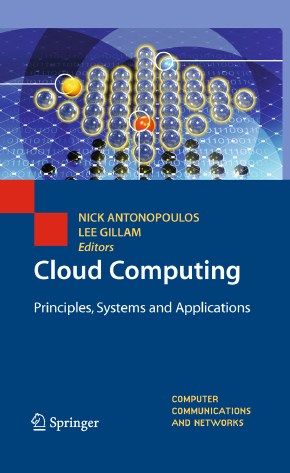
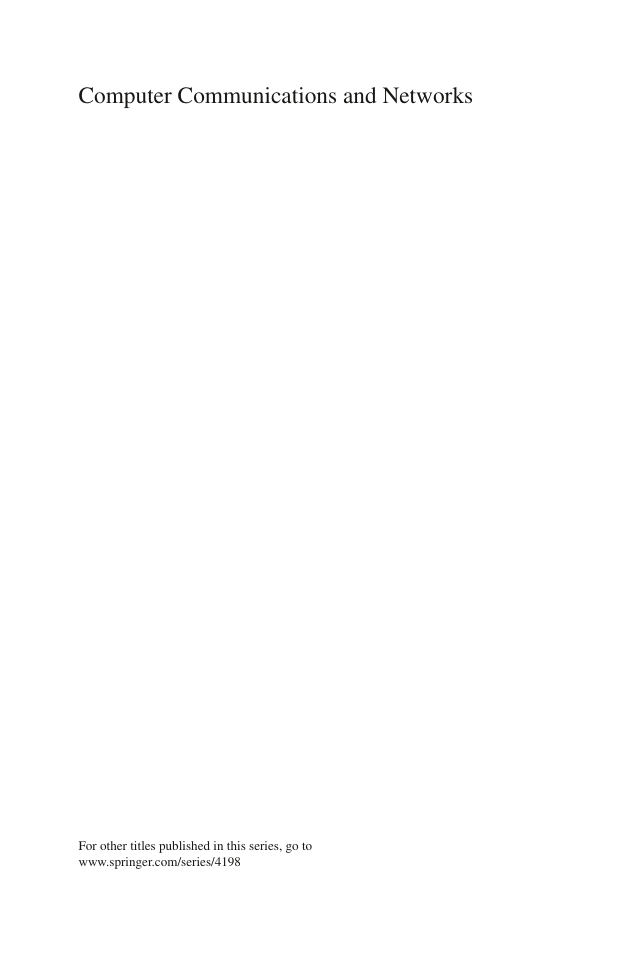
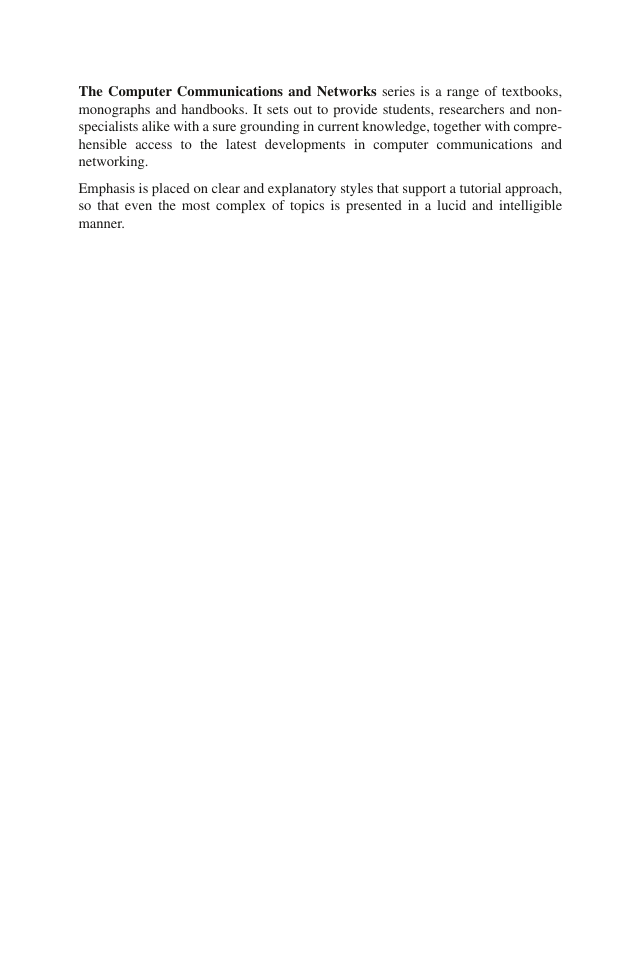
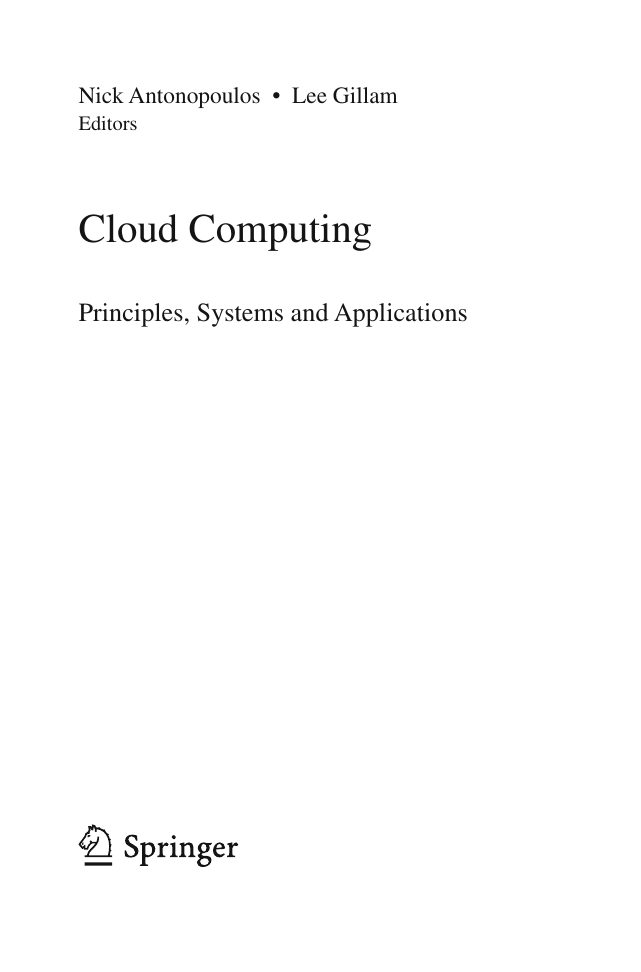
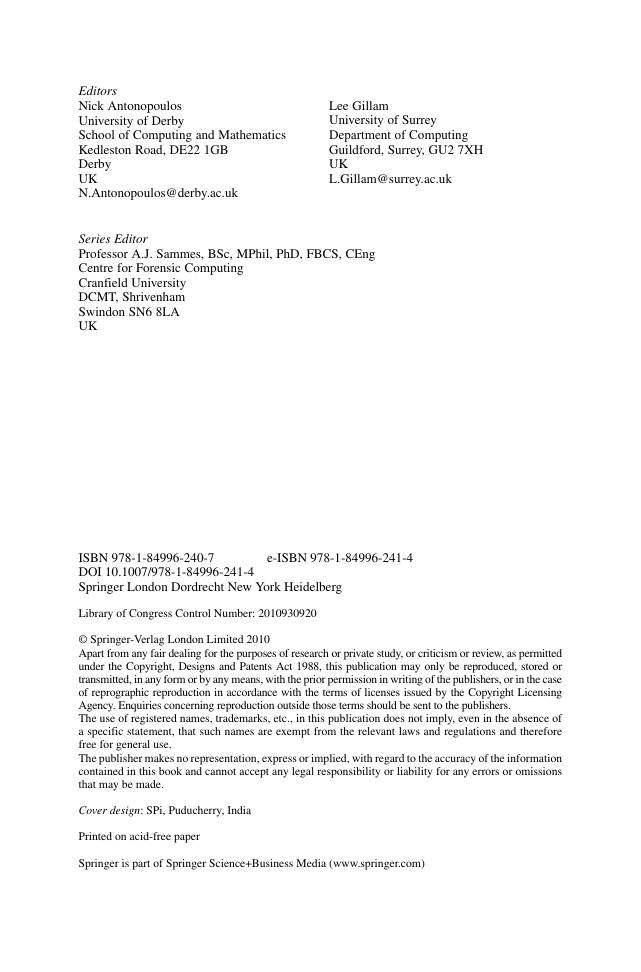
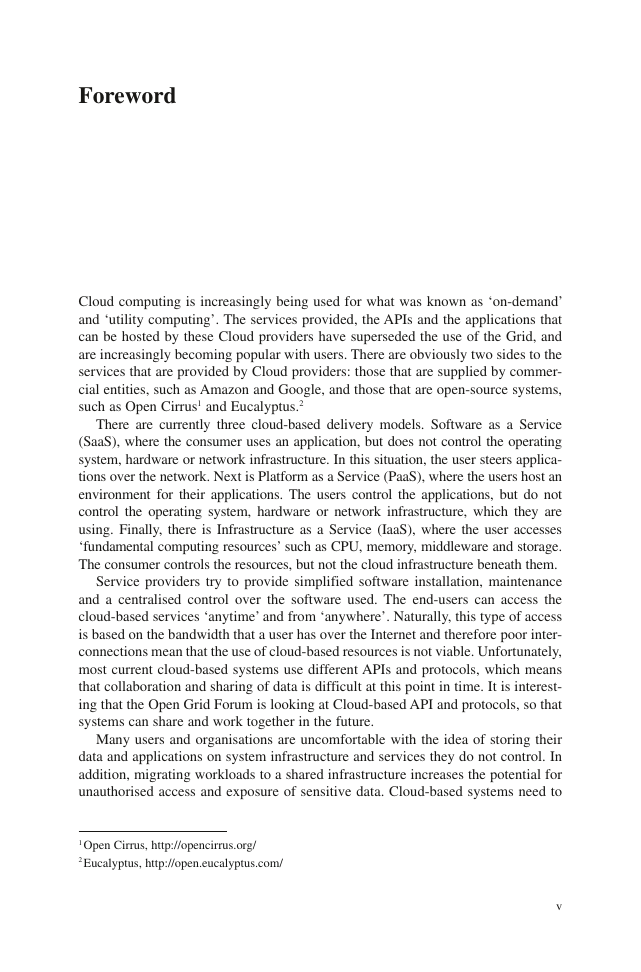
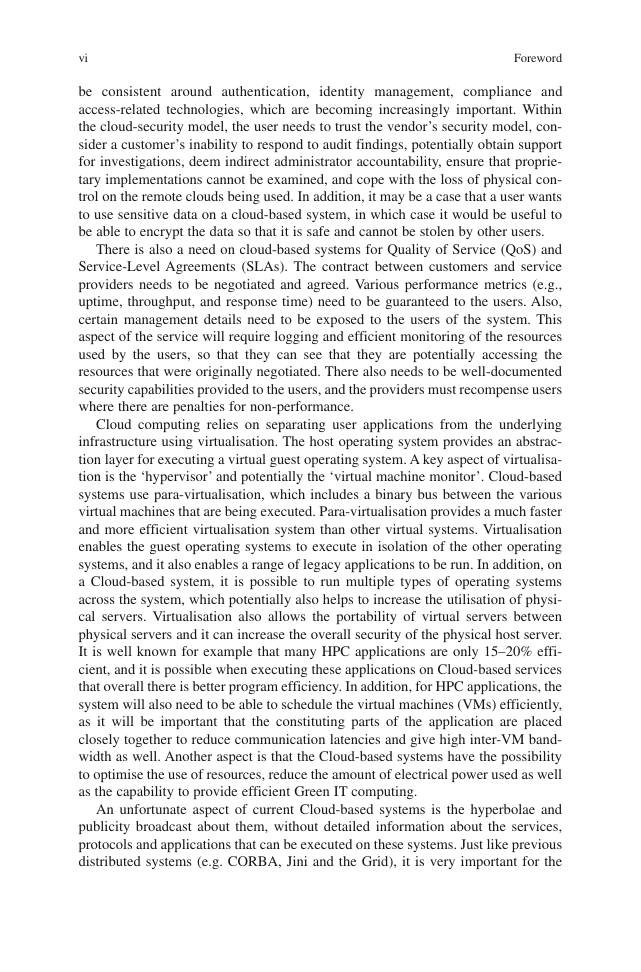
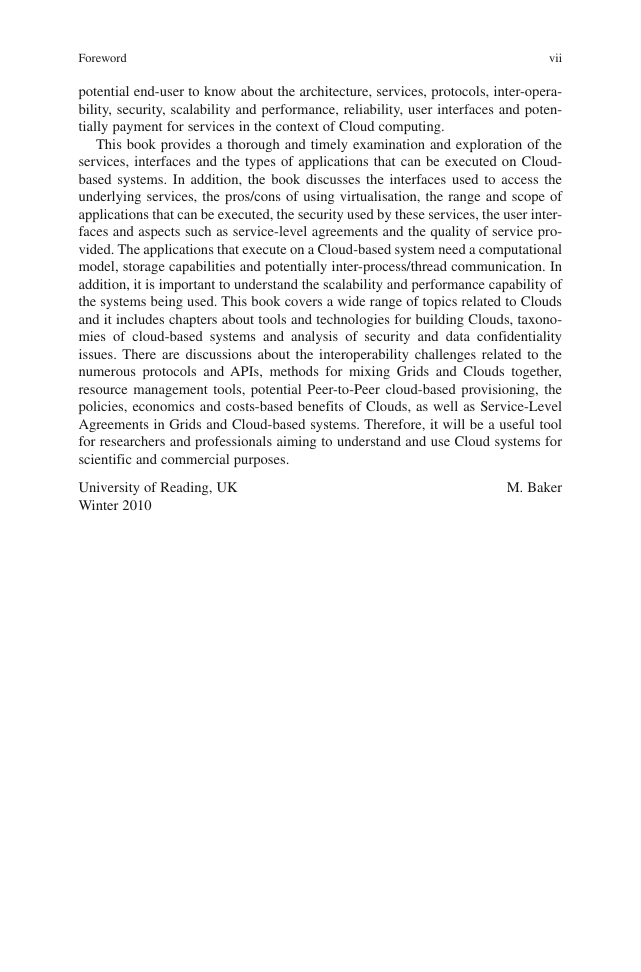








 2023年江西萍乡中考道德与法治真题及答案.doc
2023年江西萍乡中考道德与法治真题及答案.doc 2012年重庆南川中考生物真题及答案.doc
2012年重庆南川中考生物真题及答案.doc 2013年江西师范大学地理学综合及文艺理论基础考研真题.doc
2013年江西师范大学地理学综合及文艺理论基础考研真题.doc 2020年四川甘孜小升初语文真题及答案I卷.doc
2020年四川甘孜小升初语文真题及答案I卷.doc 2020年注册岩土工程师专业基础考试真题及答案.doc
2020年注册岩土工程师专业基础考试真题及答案.doc 2023-2024学年福建省厦门市九年级上学期数学月考试题及答案.doc
2023-2024学年福建省厦门市九年级上学期数学月考试题及答案.doc 2021-2022学年辽宁省沈阳市大东区九年级上学期语文期末试题及答案.doc
2021-2022学年辽宁省沈阳市大东区九年级上学期语文期末试题及答案.doc 2022-2023学年北京东城区初三第一学期物理期末试卷及答案.doc
2022-2023学年北京东城区初三第一学期物理期末试卷及答案.doc 2018上半年江西教师资格初中地理学科知识与教学能力真题及答案.doc
2018上半年江西教师资格初中地理学科知识与教学能力真题及答案.doc 2012年河北国家公务员申论考试真题及答案-省级.doc
2012年河北国家公务员申论考试真题及答案-省级.doc 2020-2021学年江苏省扬州市江都区邵樊片九年级上学期数学第一次质量检测试题及答案.doc
2020-2021学年江苏省扬州市江都区邵樊片九年级上学期数学第一次质量检测试题及答案.doc 2022下半年黑龙江教师资格证中学综合素质真题及答案.doc
2022下半年黑龙江教师资格证中学综合素质真题及答案.doc